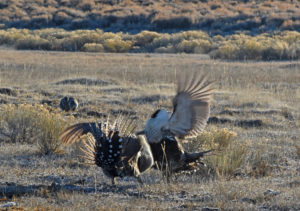For Immediate Release: September 18, 2020
Contact:Laura Cunningham, Western Watersheds Project, 775-513-1280, lcunningham@westernwatersheds.org
Point Reyes National Seashore, Calif.— Conservationists blasted the National Park Service (NPS) today as it released a final environmental review of its plan for managing more than 28,000 acres of NPS lands on Point Reyes National Seashore, proposing to extend and even expand ranching on all lands currently leased for livestock grazing. The proposed plan also governs the controversial management of native free-roaming tule elk. The NPS proposes to cull elk to save grass for domestic cows.
“I grew up in the East Bay and have been visiting Point Reyes National Seashore since the 1980s, and I never thought park management would come to this,” said Laura Cunningham, California Director at Western Watersheds Project. “Native wildlife are going to be killed for the sake of private livestock operators who have already been paid to get off the park lands.”
Today’s final Environmental Impact Statement (EIS) affirms that NPS intends to implement a plan that would expand ranching, allow commercial agricultural diversification, including row crops and more livestock, and extend grazing leases to 20 years. Tule elk could be shot if they entered the cattle pastures. The NPS is moving ahead with this plan despite the fact that more than 90% of the 7,627 public comments received after the draft Environmental Impact Statement was released favored wildlife, recreation, and nature at the Seashore.
The recent fires and severe drought have underscored the controversy about NPS management of Tule elk in the National Seashore. There is currently a fence that confines the tule elk away from the livestock operations and in an area where surface waters are disappearing. Four of six known ponds have dried up, and seeps and springs hold very little water for the 400 or so elk within the reserve. Visitors to the seashore have documented dead elk within the enclosed area.
“It’s completely unacceptable in a National Park unit,” said Cunnigham. “The cattle herds are significantly impairing the natural resources in one of the most scenic parks, and a key part of the Miwok homeland, that is accessible to a large diversity of Bay Area visitors. It’s clear that the Park Service doesn’t care about any of this and plans to continue business as usual at the expense of the natural environment.”






